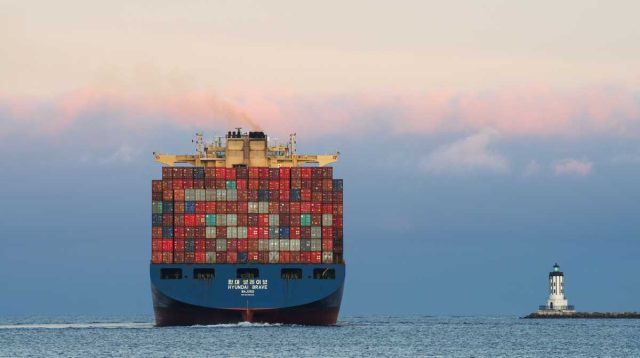Trade Lane Upheavals Divert More Container Cargo to U.S. West Coast

The recent challenges facing the global shipping industry have led to a significant shift in the dynamics of international trade routes, particularly affecting the flow of goods from Asia to the U.S. East Coast. The Panama Canal, a pivotal maritime shortcut connecting the Atlantic and Pacific Oceans, is experiencing restrictions due to drought conditions, reducing its capacity for east-west transits. Meanwhile, the Red Sea, another critical passageway for ocean carriers, has become increasingly dangerous due to attacks by Yemen’s Houthi rebels, prompting major shipping companies to seek alternative routes.
Historically, the Panama Canal has been a cornerstone of global trade since its completion in 1914. It dramatically reduced the time required for ships to travel between the Atlantic and Pacific Oceans, eliminating the need to navigate the treacherous Cape Horn. Over the years, the canal has undergone several expansions, the most recent being the addition of new locks in 2016 to accommodate larger vessels. However, its reliance on freshwater lakes and the impact of climate change have made it vulnerable to drought, leading to the current situation where the canal can only allocate 24 slots per day for ships, a significant decrease from the normal 36 slots.
The Red Sea, on the other hand, has been a vital link for maritime traffic between Europe, Asia, and the Middle East. The Suez Canal, at its northern end, offers a direct route to the Mediterranean Sea, bypassing the need to sail around Africa. However, the ongoing conflict in Yemen has escalated the risks of navigating these waters, with Houthi rebels targeting commercial vessels with missiles, armed UAVs, and suicide drone boats. This heightened security threat has led to a reevaluation of this route by the global shipping industry.
The combination of these challenges has prompted a resurgence in the importance of U.S. West Coast ports, reminiscent of the era before the dominance of all-water routes through the Panama Canal and the Suez Canal. Retailers and shippers are increasingly turning to these ports as entry points for goods from Asia, followed by transcontinental rail transport to the East Coast. This “back-to-the-future” moment underscores the adaptability of the shipping industry to geopolitical and environmental changes.
However, this shift is not without its consequences. The increase in demand for West Coast ports and subsequent rail transport to the East Coast is raising concerns about potential congestion and the capacity of the rail network to handle the anticipated surge in traffic. This situation is compounded by the significant increase in freight prices, attributed to the longer voyage times and higher operational costs associated with circumnavigating Africa or relying more heavily on transpacific shipping and cross-country rail services.
Investors, however, seem optimistic about the prospects for ocean carriers, as evidenced by the rising share prices of major shipping companies. This optimism likely stems from the expectation that the increased revenue from higher freight rates will outweigh the additional operational costs.
The current disruptions in traditional shipping routes due to environmental challenges and security threats are reshaping the landscape of international trade. The resurgence of the U.S. West Coast ports highlights the industry’s resilience and the ongoing importance of strategic maritime passageways. As the situation evolves, the global shipping industry will continue to adapt, seeking efficient and secure ways to transport goods across the world’s oceans.

